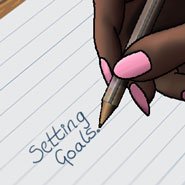Student participation forms one of the most crucial areas of teaching because participation enhances the learning experience of everyone involved – including the teachers.
Active participation can prove difficult for students as many are reluctant to raise their hands or even speak up, however, there are a range of ideas and methods that help to increase participation while also giving students the confidence they need.
Participation in the classroom should not be underestimated as it creates a learning environment that is multi-dimensional as well as engaging. When students participate they also feed back what they have learned and understood and that can help teachers to shape their lessons.
It is crucial for teachers to understand the strengths and abilities of students before entering the classroom. This can be achieved through speaking with previous teachers as well as looking at relevant files.
However, it is possible to ask the students what their interests are and what they enjoy doing because this will give them an attachment to the learning experience which will enhance participation.
For those students who are lacking any sort of interest in participation it could help to provide them with positive role models who have succeeded in life. This could encourage them to take on a mentality that will make them feel like they too can be a success and so they will begin to participate more.
There are famous film directors, scientists and Nobel prize winners who have learning difficulties, and so helping the students to develop through this positive association will really make the difference.
Students like to use their strengths, the simple reason is because they are aware of these strengths and so, if strategies are put in place to utilise them the students will feel the urge to participate because of the feel-good factor.
For students with learning difficulties, they may be good at vocabulary but not so good at reading and so allowing them to illustrate their vocabulary will improve their confidence.
The world we live in is technologically advanced to the point where it can now be used to help those with difficulties. There are a range of apps that can help people with many different needs.
There are speech-to-text apps, augmentative speech apps and apps that allow students to enhance their skills and abilities which will improve their ability to participate and use the strengths that they do have while improving any weaknesses.
A huge part of learning is about being in relationships with others. Those students who are lacking any form of participation may find it difficult to establish positive connections.
A graphic that represents the student’s peer network can help to identify the strong and weak relationships enabling the teacher to pair the student with classmates that they have a positive relationship with. This can then be paired up with learning approaches such as peer-teaching and cross-age tutoring.
Many students who struggle with participation have a very low self-esteem and have no real image of where they see themselves in the future. Encourage them to participate by linking their strengths with specific jobs or careers. Helping students envisage positive future careers will encourage them to learn which will require the right level of participation.
One aspect of teaching that can prove to be a difficult hurdle is the interest levels in specific subjects. Keeping students interested, attentive and participating in a subject that does not hugely appeal to them can be tricky.
To overcome this potential issue, connect lessons to real-life situations. A good example of this would be a maths teacher using sports as a veil to enhance and encourage learning. As they feel more familiar with the subject and how it can relate to their lives it will lead to increasing participation. This will equip students with the information and answers that they need in order to discuss and answer questions on certain topics and subjects.










